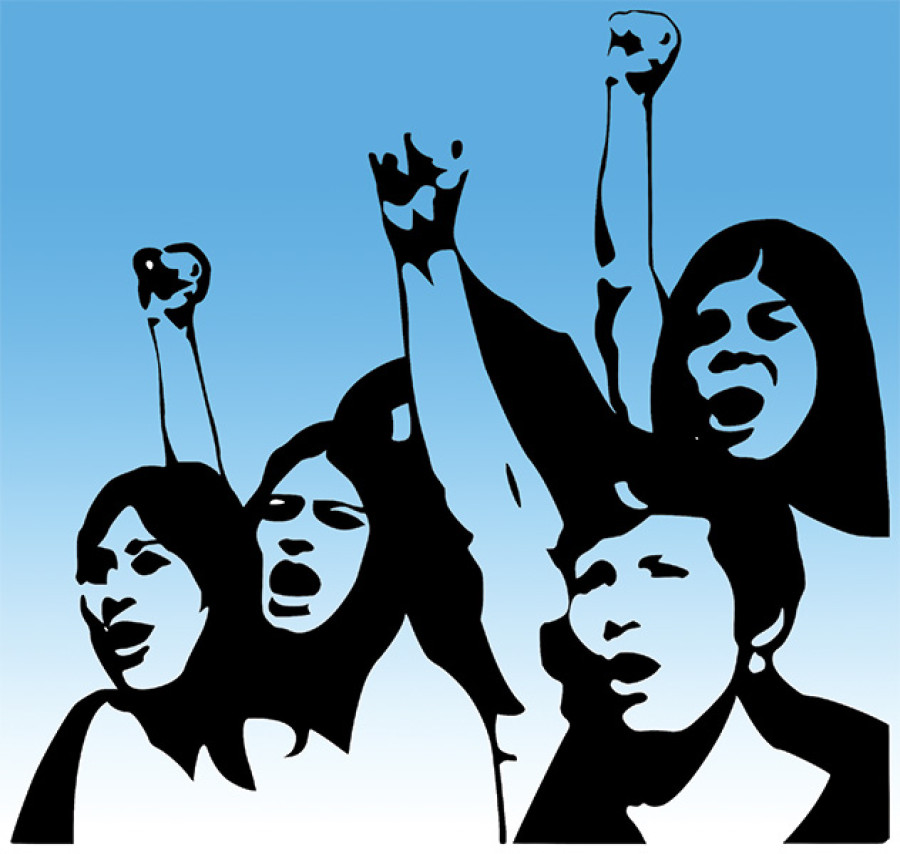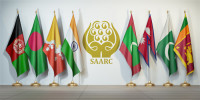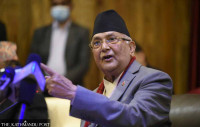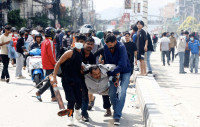Opinion
Strength of a woman
Shortcomings with the microcredit approach have to be addressed to fuel women’s development
Women’s development has been a popular theme for the government and various international and national non-governmental organisations in Nepal for over five decades. Nepal has a female president and speaker of Parliament. Nepal also had a female chief justice until a few months ago. Enrolment of girls at the elementary level of education outweighs the enrolment of boys. Nepali women are now in the army and police, and are doctors and engineers. There has been a substantial increase in the number of women parliamentarians. Nepali women are entitled to several rights such as the inheritance of ancestral property and the transference of citizenship rights to children, among others. Now, marital rape is considered a criminal offense.
However, underneath this glittering surface lies the grim reality of common Nepali women who are unable to claim their rights, either because of a lack of knowledge or their inability to speak up for themselves. Practices, such as child-marriage and Chhaupadi still persist. Violence against women under accusations of witch-craft and a lack of dowry continue to occur. Other forms of violence include rape and assault. Only a tiny portion of Nepali women enjoy their freedom and rights. Women development initiatives in Nepal have been unable to cater to the critical mass.
Historical overview
The term ‘development’ featured prominently in Nepal during the Panchayat regime when King Mahendra Bir Bikram Shah Dev exercised absolute power and imposed party-less rule in 1962. The regime used the ‘development’ card to lure foreign aid. Development then was as urgent as it is today, as the preceding Rana regime had indulged in a lavish lifestyle, fuelling their luxuries by taxing the poor. The Panchayat regime quickly learned how it could benefit from the new waves of development that had captured the globe then. This is how Nepali women came under the state’s purview. In the wake of the International Women’s Year and the First World Conference on Women in 1975, Nepal amended the country code granting inheritance rights to unmarried women at the age of 35.
The state also formed the Nepal Women’s Organisation, which provided skill development programmes and family planning services to women. It embraced the Women in Development (WID) approach by including it in its five-year development plans and also established a Women Development Section under the Ministry of Panchayat and Local Development in 1980. Following the ratification of The Convention on the Elimination of all Forms of Discrimination Against Women (CEDAW) in 1991, WID units were expanded in several ministries. And right after the Beijing Conference, the government established the Ministry for Women, Children and Social Welfare (MoWCSW) in 1995.
The MoWCSW facilitated several programmes and provided legal education and skill development training, however, till date the microcredit approach of women’s development has been at the core of all its projects. Launched in the 1980s, the microcredit programme was previously known as Production Credit for Rural Women. Now, the same programme has developed into a system where women participate in a joint savings programne to form cooperatives. The main thrust of the MoWCSW’s Women Development Programne (WDP) is on women empowerment. Members can obtain loans for economic activities without collateral through such cooperatives. The MoWCSW now runs its WDP in 75 districts. Besides the ministry, numerous I/NGOs are active in the microcredit approach for women’s development with the conviction that women’s access to resources and their involvement in income generation results in their empowerment.
Missing link
However, over the years, shortcomings have surfaced in regards to the microcredit approach. The weakness lies in the simplistic notion that women in a group enjoy solidarity, resulting in their empowerment. The reality is, women in cooperatives often do not make up a homogenous group. There exist power and caste/ethnicity hierarchies, and not all members benefit from such groups. Often, the male members of a woman’s family use the loaned money. Women’s involvement in economic activities is a double burden since they also have to cope with household chores. Most of the income generating skills that women get to learn either concern the farming of cash crops/vegetables, or in areas like tailoring, knitting, food processing/packaging; these skills hardly take women into the public sphere.
On most occasions these trainings programs do not reach the needy. Such programs, mostly conducted by I/NGOs, also involve cash allowances and the trainees are mostly composed of those who have access to higher authorities and who merely attend the training, receive the cash incentive and certificate and do not implement the skill-set learned. Though all members in a women’s group may receive basic skill as required by the government’s WDP, advanced trainings are attended by privileged senior members. Sometimes, women do buck this trend and become successful. There are cases of WDP women groups with successful women entrepreneurs, or other cases of women groups controlling domestic violence in their locality. However, they have not been active or organised enough to bring about structural changes.
International trends regarding women’s development are important as they provide us with new understandings and techniques in coping with problems facing women. However, in terms of designing and implementing WDPs, the fact that there is no single image of Nepali womanhood should be taken into consideration. Gender roles vary depending on caste, ethnicity and geography. The idea of running WDPs by organising women from different castes and ethnicities into one group is surely well intentioned, however, it may give rise to adverse effects on women’s development. I observed a case where Dalits opted out of such government programmes because they felt dominated by people of other ethnicities and higher castes. Therefore, WDPs should be designed and implemented through an intersectional approach. Also, WDPs should have effective monitoring and evaluation mechanisms so that no nepotism and table work is at play, and that the program benefits the target group.
Ojha is a PhD student at Doshisha University, Kyoto, Japan




 10.12°C Kathmandu
10.12°C Kathmandu









